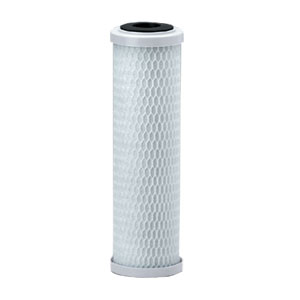|
Celebrating 34 years providing high quality products and advice.
|
| Our Local Time Is 12:05:06 PM. |
| Call us at 818-786-0600. We are here to help! |
 |
ON SALE NOW
Introducing the Polaris Lab Water Systems
High Purity Water Made In The USA.
Click here for more info. |
About Arsenic In Drinking Water
|
From the CDC
What is arsenic?
Arsenic is an element that occurs naturally in rocks and soil. Arsenic can combine with other elements to make chemicals used to preserve wood and to kill insects on cotton and other agricultural crops.
How can I be exposed to arsenic?
It is possible to be exposed to arsenic through the following:
Food: Arsenic in the air can be washed to the ground when it rains, contaminating crops and fields. Although arsenic can build up in the tissues of fish and shellfish, this form of arsenic will not hurt people.
Water: Water may have arsenic in it if there are high levels of arsenic in the rocks through which the water flows, or if there is a leaking hazardous waste site close by. Some chemicals containing arsenic can dissolve in water.
Map of common levels of Arsenic in the water supply

Air: Sawdust and smoke from burning arsenic-preserved wood may contaminate the air you breathe.
Where and how common is arsenic found in drinking water?
Arsenic can enter the water supply from natural deposits in the earth or from industrial and agricultural pollution. Arsenic is a natural element used for a variety of purposes within industry and agriculture. It is also a byproduct of copper smelting, mining, and coal burning. Industries in the United States release thousands of pounds of arsenic into the environment every year. Once released, arsenic remains in the environment for a long time.
It is widely believed that naturally occurring arsenic dissolves out of certain rock formations when ground water levels drop significantly. Surface arsenic-related pollutants enter the ground water system by gradually moving with the flow of ground water from rain, melting snow, and so on.
High arsenic levels may come from certain fertilizers, animal feedlots, and industrial waste. High levels of arsenic found in well water are often used to indicate improper well construction, or the location or overuse of chemical fertilizers or herbicides.
What are the symptoms of arsenic exposure?
Observable symptoms or effects of arsenic poisoning include:
Thickening and discoloration of the skin
Stomach pain, nausea, vomiting
Diarrhea
Numbness in hands and feet
Partial paralysis
Blindness
Several studies have shown that inorganic arsenic can increase the risk of lung cancer, skin cancer, bladder cancer, liver cancer, kidney cancer, and prostate cancer. The World Health Organization (WHO), the Department of Health and Human Services (DHHS), and the Environmental Protection Agency (EPA) have determined that inorganic arsenic can cause cancer in humans.
What should I do if I have concerns about arsenic exposure?
See your health care provider to discuss your concerns. For more information, call the Agency for Toxic Substances and Disease Registry (ATSDR), Division of Toxicology at 1-888-422-8737.
How is arsenic exposure diagnosed?
There are tests that measure the level of arsenic in your body. Arsenic can be measured in blood, urine, hair and fingernails. Testing urine will tell you if you have been exposed to arsenic in the last few days. Testing hair and fingernails will tell you if you have been exposed to arsenic in the past six to twelve months. These tests will tell you if it was arsenic that made you sick. However, the tests cannot tell if the arsenic will make you sick in the future.
What is the treatment for arsenic exposure?
There is no effective treatment for arsenic exposure. Your health care provider can only help provide relief from your symptoms.
Can I remove arsenic from my drinking water?
Arsenic Removal FiltersDistillationReverse Osmosis
Yes. There are several types of point-of-use, in home filters that can be used to remove arsenic from drinking water, which use methods such as reverse osmosis, ultra-filtration, and ion exchange. Distilling the water can also be used to remove arsenic. If you want to know more about these removal technologies, please contact NSF International, an organization for public health and safety through standards development, product certification, education, and risk-management. Contact information is provided below. Boiling water will not remove arsenic and could slightly increase the concentration of arsenic in your water if you continue boiling and lose a large amount of water as steam. Chlorine (bleach) disinfection will also not remove arsenic.
http://www.cdc.gov/ncidod/dpd/healthywater/factsheets/arsenic.htm
|
Images are representative of the products. Images may or may not be of the actual product. If it is important e-mail us for an actual image if available.
* Flat Rate UPS shipping when able to ship via UPS and is in the USA excluding Hawaii and Alaska.
Larger Items may not be able to ship via UPS, in that case freight charges will be quoted seperately.
International shipping will be quoted after the order is placed. You will have the opportunity to cancel before we finalize your order.
Terms and conditions
Credit Application
Privacy
Policy
List All Products
|















